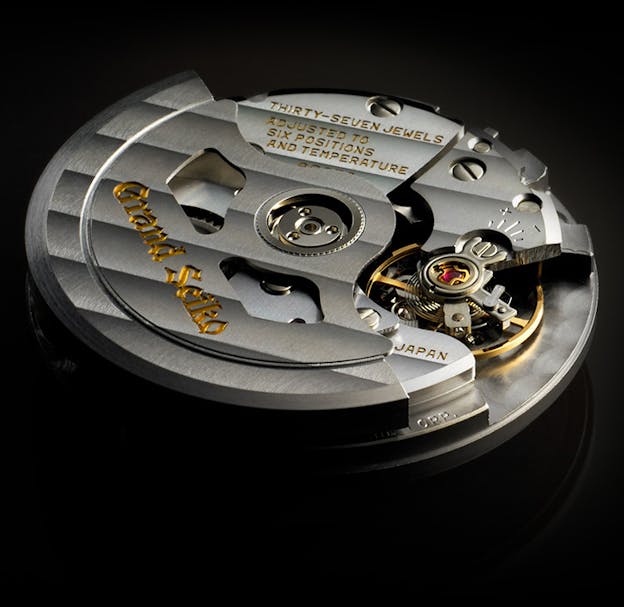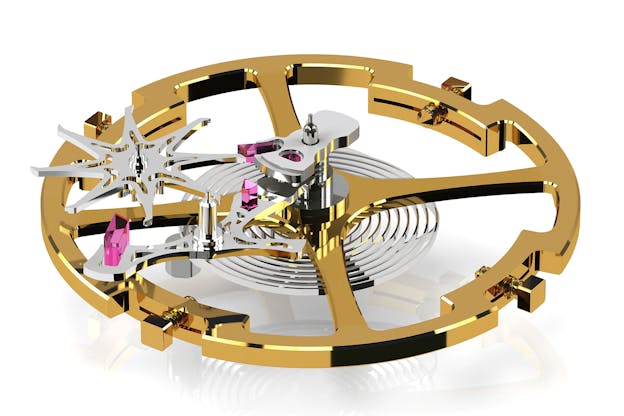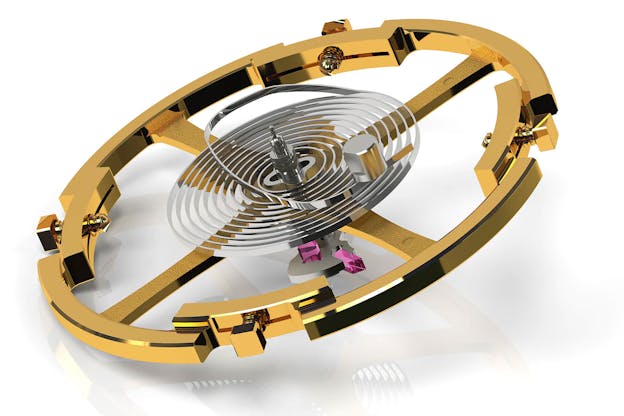Wrist Check: The Grand Seiko Hi-Beat ‘White Birch’ SLGH005
Is the evolution a revolution?
What is Grand Seiko? The answer to that question has changed quite a lot since Seiko relaunched Grand Seiko internationally in 2010 – symbolically the biggest watershed moment was Grand Seiko becoming independent from Seiko in 2017. At the time I thought this a dicey move, but it turns out to have not had any negative impact whatsoever and of course, not having Grand Seiko dials read “Seiko Grand Seiko” is probably a plus. My own early memories of Grand Seiko are a couple of decades old but it was for a long time, one of the good guys to aspiring watch enthusiasts, and they gave, in the luxury watch game, the same benefit you got from standard Seiko automatics – tremendous bang for the buck, of course, but also that they were for people who were really interested in watches. There was when the brand started coming out internationally in 2010, that what you were paying for was a watch, not a marketing campaign – Grand Seiko to this day avoids most of the partnerships, collaborations, and sometimes odd bedfellows that you find in conventional watch advertising (Seiko of course does partnerships on a regular basis, often from the sports world) and to this day, Grand Seiko marketing is about the watches, not the people who wear them or the places where they’re seen.
What has changed of course, is how ambitious the watchmaking is. I would have bet real money if anyone had asked me five years ago, that we would never see anything like the Kodo Constant Force Tourbillon, or some of the other five or even six figure watches in the Grand Seiko Masterpieces collection – but there they are; the Kodo, at $350,000, is by far the most expensive Grand Seiko ever produced and a far cry from the SBGR261 automatic, and SBGW231 hand-wound, which at $4,300 represent the entry point to the brand. They also represent what originally made Grand Seiko a cult brand – and the fact that for much of the 2000s they have been relatively rare doesn’t hurt either.
The big talking pieces in the Masterpieces collection are the most obvious poster children for the transformation of Grand Seiko since 2010, but a lot of the most interesting evolution has actually taken place in a collection with “evolution” in its name: The Evolution 9 collection, announced in 2020 (the 60th anniversary of Grand Seiko). They’re thinner overall than other Grand Seiko watches thanks to thinner movements, and the cases minimize curved surfaces in favor of flat, polished facets with sharp intersections. The hands and markers are large, multifaceted and highly polished, even more so than usual for Grand Seiko; the thinner cases and wide lugs, combined with substantial bracelets, make the watches very comfortable to wear as well.
Ambassador For An Evolution: The ‘White Birch’ Hi-Beat
One of the best known and earliest Evolution 9 watches was the Hi-Beat SLGA005 “White Birch,” with a dial designed to evoke birch tree bark, and also used a new movement. This is the high frequency caliber 9SA5, with an 80 hour power reserve and a new variation on the lever escapement – the latter is Grand Seiko’s Dual Impulse escapement, which offers better efficiency than a standard lever, contributing significantly to the 80 hour power reserve.

Although the watch was announced back in 2021, I hadn’t had a chance to see it in person until a few weeks ago and though I’m as used to admiring Grand Seiko dials, hands, and dial furniture as anyone, I wasn’t expecting to be as impressed as I was. The dial texture looks very organic – the fine grain and seemingly random organic pattern aren’t a literal representation of birch bark but they do a fine job of suggesting it, which is very characteristic of traditional Japanese arts and crafts, in which there is often a gap between what is literally represented and what is emotionally evoked by an artwork. The diamond polished hands and markers glitter like jewels and offer the same optical properties as classic black polishing – flat surfaces are either a uniform grey, black, or white depending on the angle of the light.

The faceting of the lugs and case is extremely precise but relatively subtle. Despite the fact that it’s not as immediately eye-catching as the dial and dial furniture it’s still quite elaborate. I counted eight distinct facets on each lug horn, for a total of 37 separate facets on all the lugs taken together, not including the brush polished case flank itself. The bezel has two distinct upper and lower bevels as well. The optical properties of the dial, hands and markers are well balanced against the case – the former are obviously the stars of the show but the case finishing is so complex that I wouldn’t be surprised if it represented a significant part of the overall manual labor in the watch. The bracelet is substantial and obviously well-made, although the softer, rounded edges of the links let the design down just a little, I think.

You don’t need to look at the numbers to know that this is a much thinner Grand Seiko. The case dimensions for the White Birch Hi-Beat are 40mm x 11.8mm, versus 39.5 x 13mm for Grand Seiko’s SBGH213 which uses the earlier 9S85 Hi-Beat caliber. In addition to being thinner by the numbers, the Evolution 9 Hi-Beat case has a lower center of gravity, making them – and the White Birch – the most comfortable Grand Seiko Hi-Beat watches so far.
The Hi-Beat Caliber 9SA5
The White Birch also uses the latest version of Seiko’s Hi-Beat movement, which beats at 36,000 vph, versus the 28,800 vph which is the standard for most modern mechanical watch movements. The use of higher frequency calibers isn’t new – the best known is the Zenith El Primero caliber, from 1969, but other makers experimented with and sometimes marketed them as well, including Girard Perregaux. The first Seiko Hi-Beat movement was the 5740C, in 1967 and the first Grand Seiko high frequency caliber came out a year later (caliber 6145). The basic rationale for using higher frequency movements is the same as that for using tuning forks (Accutron) and quartz oscillators – all other things being equal (which they never are) you should get better precision as frequency goes up.

9SA5 is a major departure aesthetically from the caliber 9S85 in a couple of respects. The 9S85 is an example of classic Grand Seiko watchmaking. The movement is very sturdily built, with crisp transitions between horizontal and vertical surfaces, and overall it feels like the clean, purposeful mechanism that it was designed to be. The escapement is a standard lever escapement, with flat balance spring and conventional regulator and there’s a 55 hour power reserve.

The first difference between the 9SA5 and 9S85 that owners will probably notice, albeit indirectly, is that the 9SA5 is flatter. The 9S85 is 28.4mm x 5.99mm versus 31.0mm x 5.18mm for the 9SA5, and that size difference translates directly into a thinner watch (5.18mm thick is still fairly thick on average for a modern automatic caliber, although not excessive; the Rolex caliber 3130 is 6mm thick). The 9SA5 has much more elaborate finishing as well, including deeper, more highly polished countersinks and bevels on the plates and bridges. On the technical side of things, you’ll notice that the 9SA5 is more heavily jeweled (47 jewels vs. the 37 in the 9S85) and that the 9SA5 has a balance bridge, rather than the balance cock found in the 9S88 (which makes for a more rigid mount for the balance wheel).

The escapement, balance, and balance spring are where you’ll find the biggest differences between the two movements. The 9SA5’s escapement is the Seiko Dual Impulse escapement, which differs from the standard lever escapement. A lever escapement powers the balance indirectly, as the escape wheel pushes the lever back and forth. The Grand Seiko escapement has a lever, which impulses the balance in one direction, and a balance wheel which impulses the balance directly on the other – hence the “Dual Impulse” name. The escapement is more efficient than a standard lever, and is partly responsible for the 80 hour power reserve of the 9SA5 over the 55 hours in the tank of the 9S85.

The 9SA5 balance is “free sprung,” – that is, there’s no regulator; instead, fine adjustment of timing is via the four timing weights set into the balance rim. The general rule in watchmaking is that the fewer things you have touching the balance spring, the better; freesprung balances with adjustable weights have been the standard at Patek Philippe (Gyromax) and Rolex (Microstella) for many years.

The 9SA5 is controlled by Seiko to +5/-4 seconds maximum deviation in rate per day, which is slightly better than COSC (the Swiss chronometer control) which stipulates +6/-4 seconds per day, so you’re getting an extra second’s precision over COSC on either end. And the aesthetics of the movement are a definite step above the 9S85, giving the White Birch the continuity between aesthetics and mechanics that’s the hallmark of genuine fine watchmaking.
Wrist Time With The White Birch
The White Birch is as satisfying a timepiece as I have ever worn. The aesthetics, allowing for variations in taste, are irreproachable and it is easy to feel, perhaps more with this Evolution 9 model than with more standard Grand Seikos, that you are in the presence of a piece of wearable art, or at the very least, of very sensitively conceived and executed industrial design. The jewel-like glitter of the case and dial would be unpleasantly distracting if it weren’t so well done, and the overall effect comes off as richly luxurious rather than garish – the White Birch is a great example of the distillation of several decades of the exercise of good taste at Grand Seiko.

There has been quite a lot of debate about whether or not the quality of the White Birch justifies the high cost of the watch, relative to more entry level Grand Seikos and to the fact that for much of its history as an international brand, a big part of the appeal of Grand Seiko was that it was comparatively less expensive than its qualitative competition. The White Birch, however, is a different kind of value proposition. At a list price of $9100, it’s a fairly expensive watch and comes at a considerable premium over its entry level siblings.
But relative to the larger world of luxury watchmaking, I think it’s a fantastic value. You get a dial, hands, markers and case which stand head and shoulders above most of the competition at this price point or indeed at just about any price point, and you get a movement that shows the same devotion to technical improvement that the Evolution 9 series overall shows in design and aesthetic improvement. In fact, I can’t think of any other watch at this price point that offers quite this combination of technical distinctiveness and sheer beauty. I had been feeling a little bit of Grand Seiko burnout over the last year or so, but actually spending time with the White Birch has been refreshing. In every way that counts, I think it’s a watch that does exactly what Grand Seiko’s always been known for – making a watch so satisfying on every level that despite the bang for the buck, you end up not thinking about the price at all.


